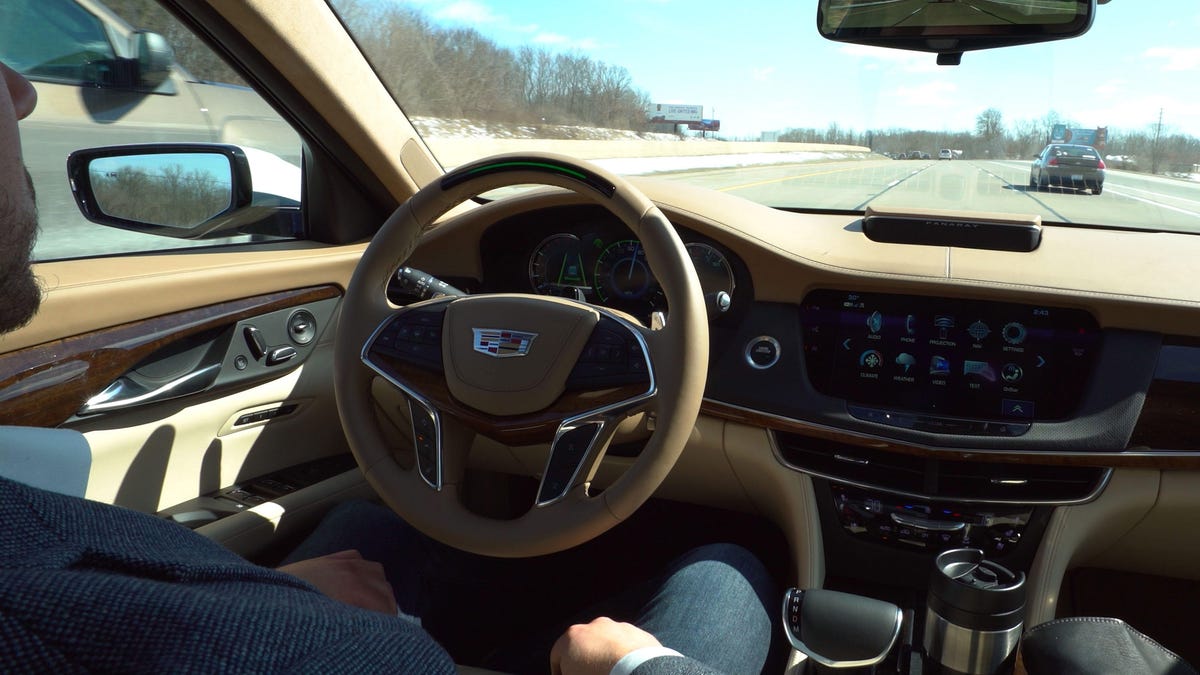Today's driver assist technologies aren't totally reliable, study says
AAA put systems to the test over 4,000 miles and concluded they're "far from 100% reliable."
Active driver assist systems have become a common new car feature, but a new study calls their reliability into question when it comes to real-world scenarios.
AAA on Thursday released the findings of its latest driver assist study, which looked at Level 2 technology. On the SAE scale of autonomy (it ranges from 0 to 5), these are the most advanced on the market today and include systems such as Cadillac's Super Cruise, Ford's Co-Pilot360, Hyundai's Highway Driving Assist and others.
Bluntly, AAA said these systems are "far from 100% reliable" while drivers use them. Over 4,000 miles, the study found an issue with driver assist tech every eight miles. Most of the time, lane-keep assist systems were the trouble. Though automakers design the tech to keep a vehicle in its lane, AAA found many systems moved too close to other vehicles or guardrails during operation. It's certainly something we've experienced in cars that come in and out of the Roadshow garage. On public road testing, AAA found 73% of errors involved bad lane position or erratic lane departures for seemingly no reason. To the technology's gain, it did perform as expected on a closed course. But, we don't drive on closed courses.
66% of the time, these systems caused a crash with a simulated disabled vehicle.
Active driving assist systems performed worst when faced with a simulated disabled vehicle in a closed course, however. The group said a crash occurred 66% with an average impact speed of 25 mph. In the tweet below, CBS News details more of the issues surrounding the systems, which includes reactions from Editor-In-Chief Tim Stevens during a Tesla Autopilot test. (Disclaimer: ViacomCBS is Roadshow by CNET's parent company).
New research is raising new questions about technology in many new cars that takes over some of the driving duties.
— CBS This Morning (@CBSThisMorning) August 6, 2020
AAA tested 5 advanced driver assistance systems and found, on average, they had an issue every 8 miles.@krisvancleave has more. pic.twitter.com/KRHDxpoE38
Another area where this kind of technology flunked is the sheer lack of warning most systems provided drivers before disengaging. Most of the time, the systems handed all controls back to the driver instantly, which AAA said can create a dangerous scenario if the driver isn't totally prepared at that moment.
GM said in a statement following the study's release, "For situations where conditions are not ideal for hands-free driving, the Super Cruise system will alert the driver to take back control of the wheel. Super Cruise has been engineered with redundant sensors and map data so that it will remain engaged until the driver takes control. Super Cruise undergoes rigorous testing and validation, and we continue to remain confident in the system."
"Manufacturers need to work toward more dependable technology, including improving lane keeping assistance and providing more adequate alerts," Greg Brannon, AAA's director of automotive engineering and industry relations, said. He added a blunt assessment after testing saying, "Active driving assistance systems are designed to assist the driver and help make the roads safer, but the fact is, these systems are in the early stages of their development."
Brannon believes poor experience with today's technology may actually harm acceptance of future technology when automakers iron issues out.


